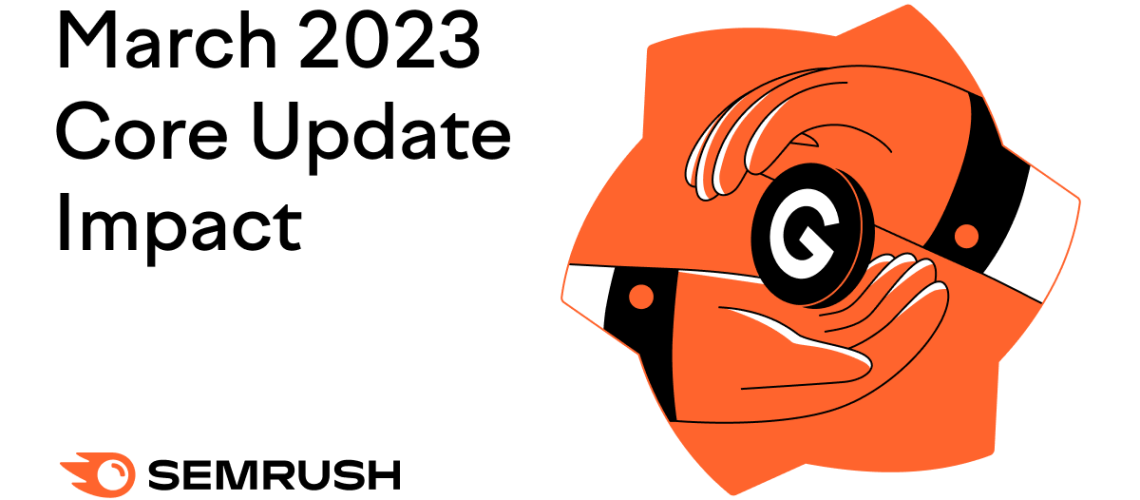On March 15th, 2023 Google announced the release of the March 2023 Core Update. The update, the first since the September 2022 Core Update, was done rolling out on March 28th and brought with it a significant amount of rank fluctuations.
With this update, there were a few things to note: 1) the amount of chatter in the industry regarding the accuracy of the update 2) the amount of volatility as compared to the previous core update
Let’s explore both.
How Volatile Was The March 2023 Core Update?
The update presented a strong spike in rank volatility that peaked on March 16th as the ImpactHER Sensor indicated a volatility score of 8.2.

I believe the behavior seen here, in that there is no longer a prolonged period of volatility during these updates, has become the new norm as is something I’ve noted going back to the November 2021 Core Update. This stands in contrast to when the Sensor would track multiple days of high volatility as an update rolled out and is an interesting pattern to note.
In terms of the level of volatility per se, the March 2023 Update was significantly more volatile than the previous core update back in September 2022.
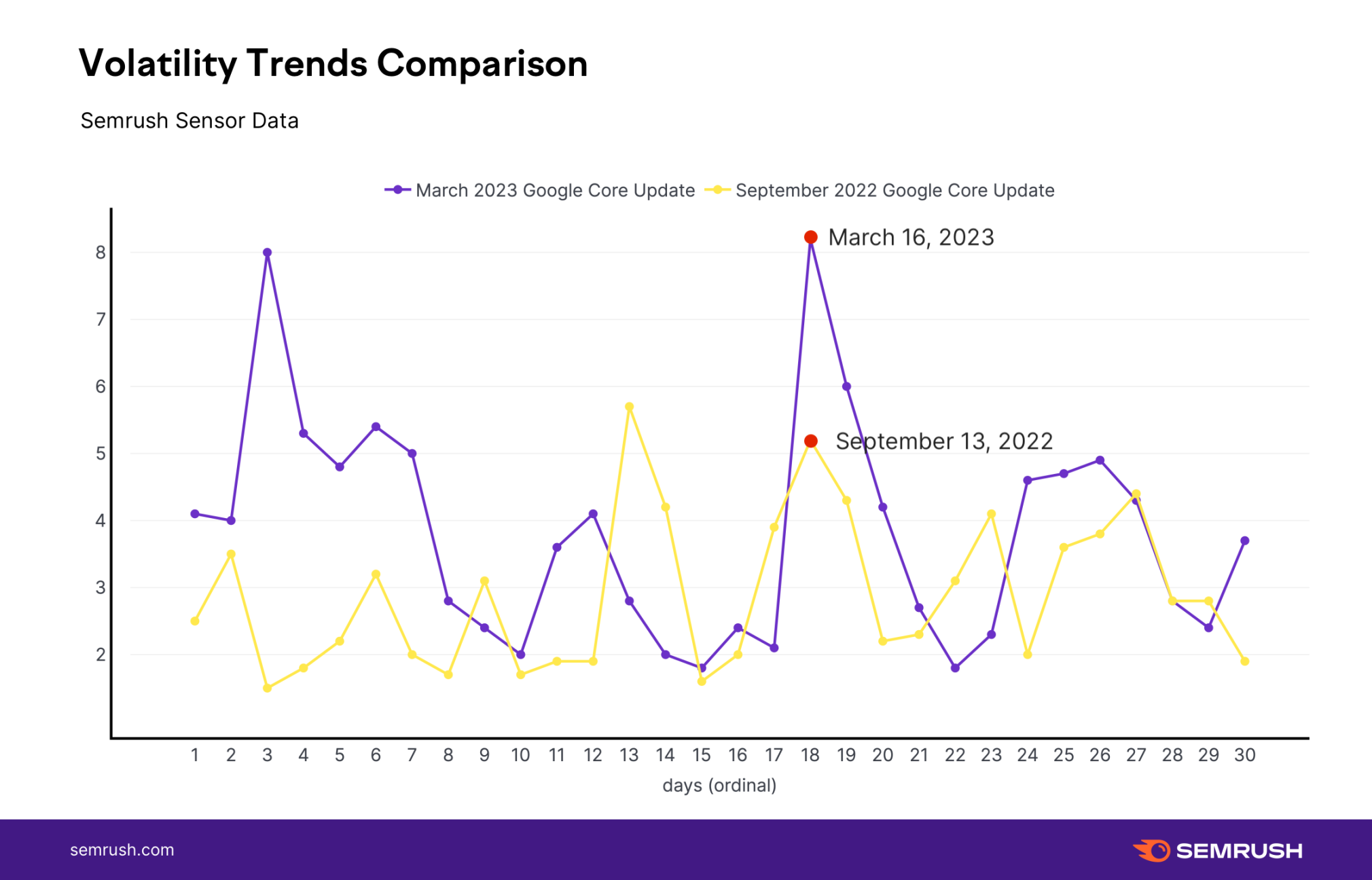
To be more specific, the March 2023 Core update saw 74% more peak volatility on desktop and 94% more peak volatility on mobile as compared to the September 2022 Core Update.
Of course, this does not mean that specific sites were impacted more significantly during the March 2023 Core Update. It is entirely possible for a specific site to have been more greatly impacted during the September 2022 Core Update as the numbers mentioned above are in aggregate.
The overall increase in rank volatility seen during the March 2023 Core Update relative to the September 2022 Core Update is perhaps best seen at the niche level.
During the September update, just a single vertical (Arts & Entertainment) saw a peak level of rank volatility above 6 on the ImpactHER Sensor’s scale.
In contrast, the March 2023 Core Update presented 8 verticals with a volatility score of 6 or above, including two verticals with a score above 7 (Arts & Entertainment as well as Shopping).
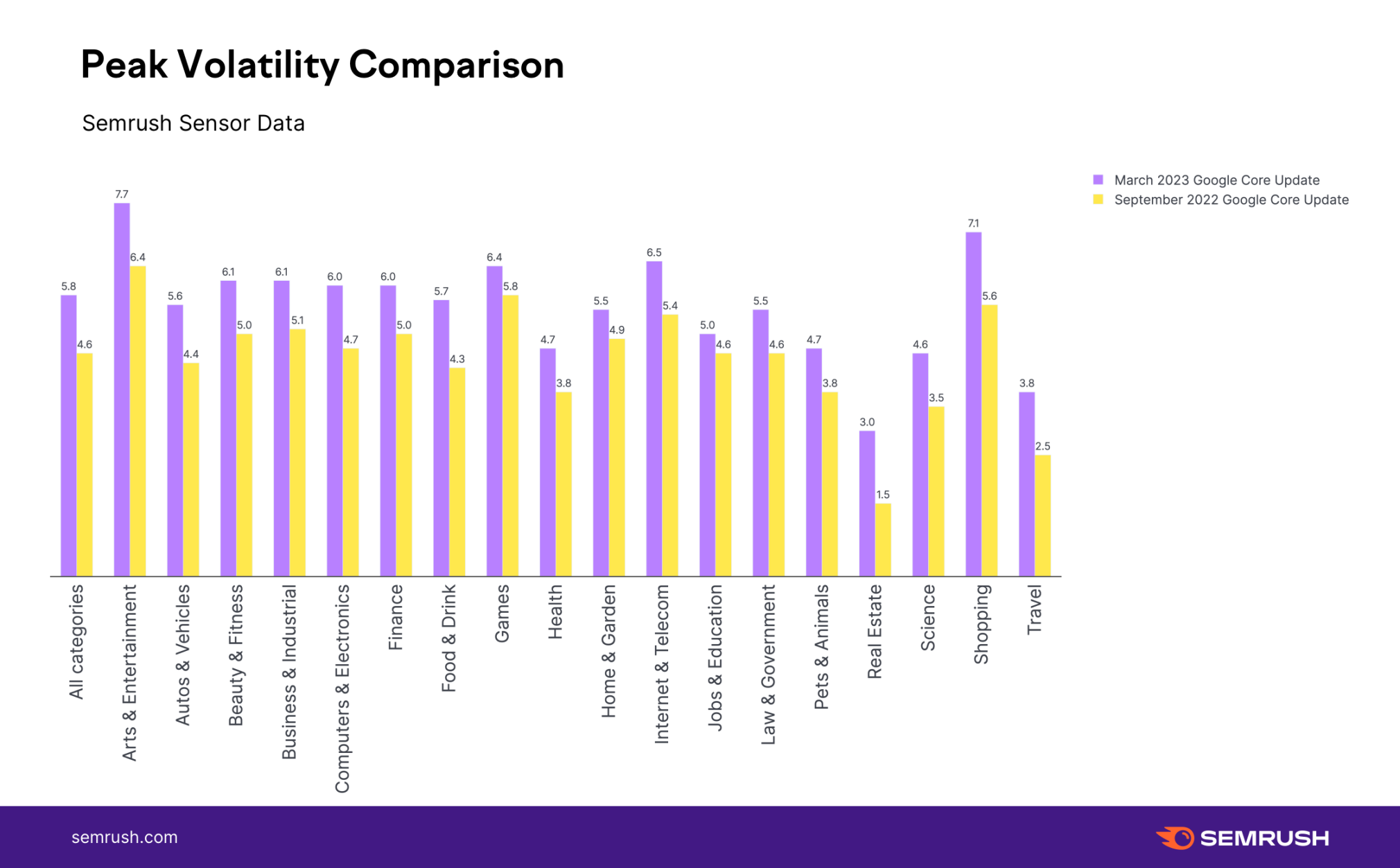
In terms of the verticals that saw the greatest change in rank volatility levels at the hand of the update (as opposed to pure peak volatility), there was a slight difference between devices.
On desktop the most significant change between baseline volatility and the volatility seen during the update as follows:
|
Category |
Change March 2023 Google Core Update |
|
All categories |
3.3 |
|
Pets & Animals |
4.1 |
|
Law & Government |
4.1 |
|
Health |
3.9 |
|
Autos & Vehicles |
3.9 |
|
Internet & Telecom |
3.7 |
On mobile, not only is the order of the verticals different but the top 5 most volatile verticals include Beauty and Fitness, not Internet and Telecom.
|
Category |
Change March 2023 Google Core Update |
|
All categories |
3.5 |
| Law & Government |
4.3 |
|
Health |
4 |
| Autos & Vehicles |
4 |
| Pets & Animals |
3.9 |
|
Beauty & Fitness |
3.8 |
How Severe Was Rank Volatility During the March 2023 Core Update?
The March 2023 Core Update was interesting (for lack of a better word) in that there seemed to be a significant amount of smaller or “micro” rank movements that coincided with drastic rank shifts as well.
This is evidenced by average position gains and losses that were less dramatic than in the past along with a higher-than-average percentage of newly ranking URLs within the top 10 results.
During the March 2023 Core Update, the average number of ranking positions lost stood at 2.74 while the average number gained was 2.7 positions.
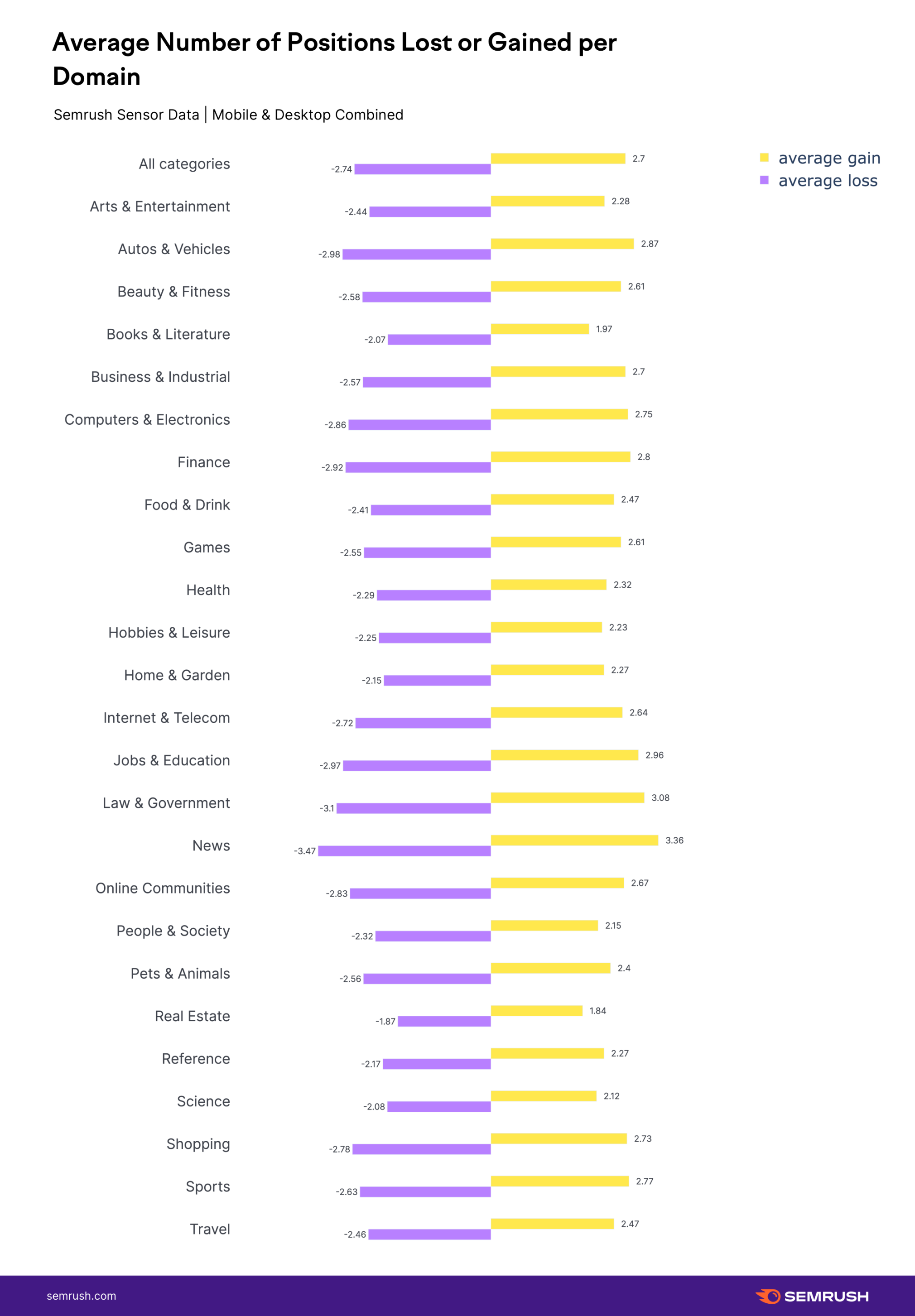
This is very similar to the data from the September 2022 Core Update where the average loss was 2.52 and the average gain was 2.51 positions. Remember, the September 2022 Core Update was significantly less volatile overall. Yet the numbers here are quite similar.
This stands in contrast to the May 2022 Core Update where the average loss was 3.77 positions and the average gain was 3.41 ranking positions. Average gains and losses above 3 positions were also seen during the November 2021 Core Update. Meaning, it seems we’re in a new pattern of somewhat of more mico-movements during a core update.
However, in contrast to the September 2022 Core Update, March also brought with it a higher level of drastic rank fluctuations.
Looking at the percentage of results ranking among the top 10 on the SERP that prior to the update were ranking beyond position 20 the March update was more disposed toward drastic ranking shifts.
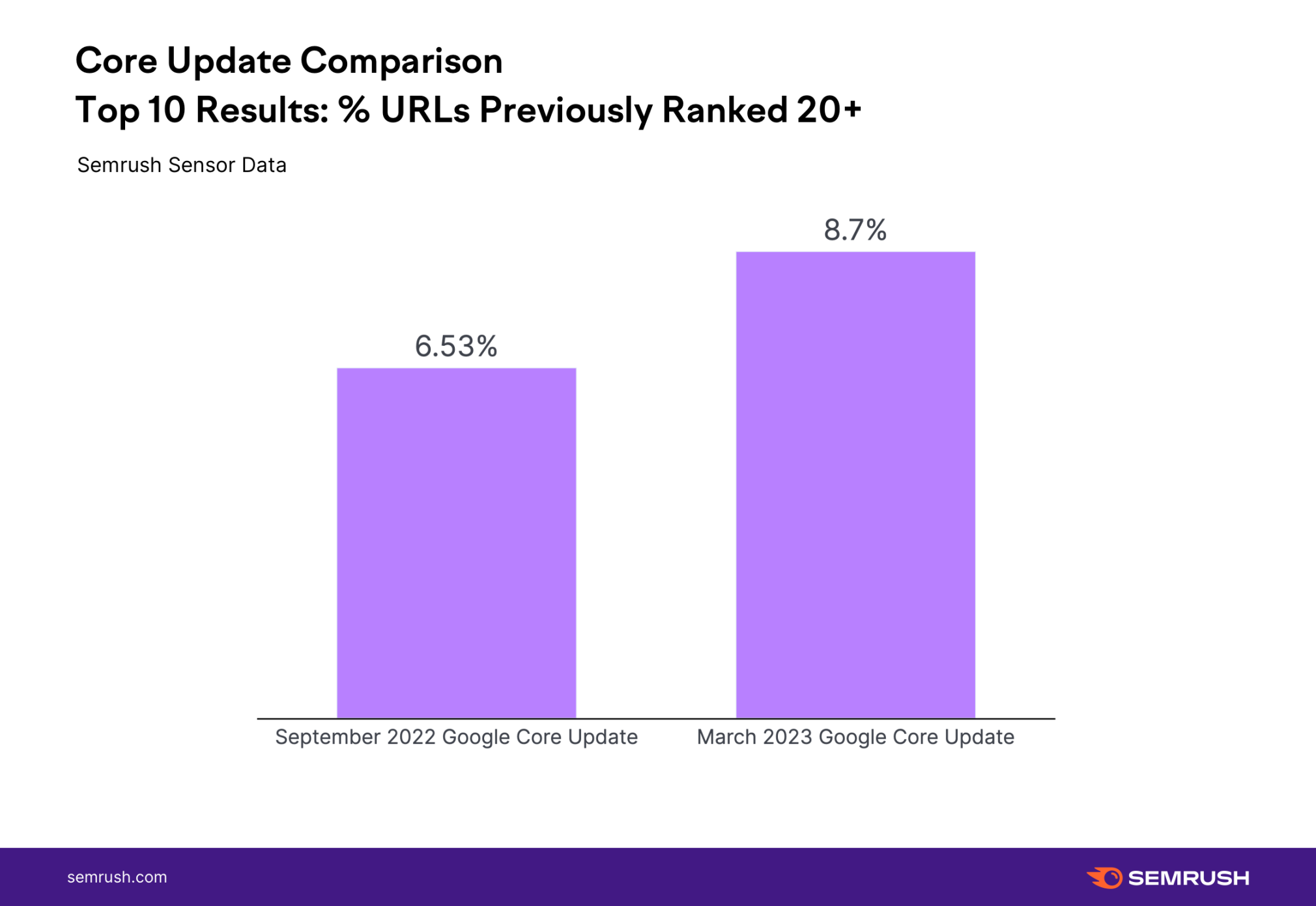
As is shown in the graph above, the net effect of the March 2023 Core Update was 8.7% of the top 10 URLs being ranked beyond position 20 prior to the update. This is more than 2 full percentage points more than the 6.53% presented by the September 2022 Core Update.
Similarly, when looking at the number of URLs ranking within the top 20 organic results post update, the March 2023 Core Update again demonstrated a tendency towards greater volatility. Here, 19.6% of the top 20 results did not rank within the first 20 positions on the SERP while back in September 2022 that number was 14.5% – a full five percentage point difference.

Ranking Trends Around the March 2023 Core Update
I’ll be honest with you, there are updates where I feel like Google really refined the results well (one such case is the February 2023 Product Review Update) and then there are cases where things might seem a bit “unsettled” for lack of a better word.
Before I even continue, let me say two things:
- Any individual’s view on a core update is inherently limited. Even with big data, we’re only looking at a tiny representation of the web. As such, I feel funny even commenting about the update outside of objective data.
- No update is perfect and the idea of expecting Google to always get it 100% right seems a bit infantile to me.
That said, my personal experience with this update was that it was a bit “funny” in what it tended to reward and demote. This in entirely anecdotal but to me this update just “felt different” in terms of how on the mark it was in certain instances. I will again say, this is entirely subjective and is not a criticism of Google in any way shape or form.
This sentiment did seem to be shared by some in the SEO community. On April 12th, 2023 Barry Schwartz reported on some SEOs questioning the accuracy of the update.
For the record, Google’s John Mueller replied back essentially stating that no update is perfect and that sometimes our expectations around these things are not entirely aligned with reality (which is quite accurate in my opinion).
That’s not to say that I didn’t see pages that warranted rank demotion being demoted by the update. The below represents Google essentially killing a page’s ranking. As well they should, as in this case the page’s main content was changed to reflect that the company had filled for Chapter 11.
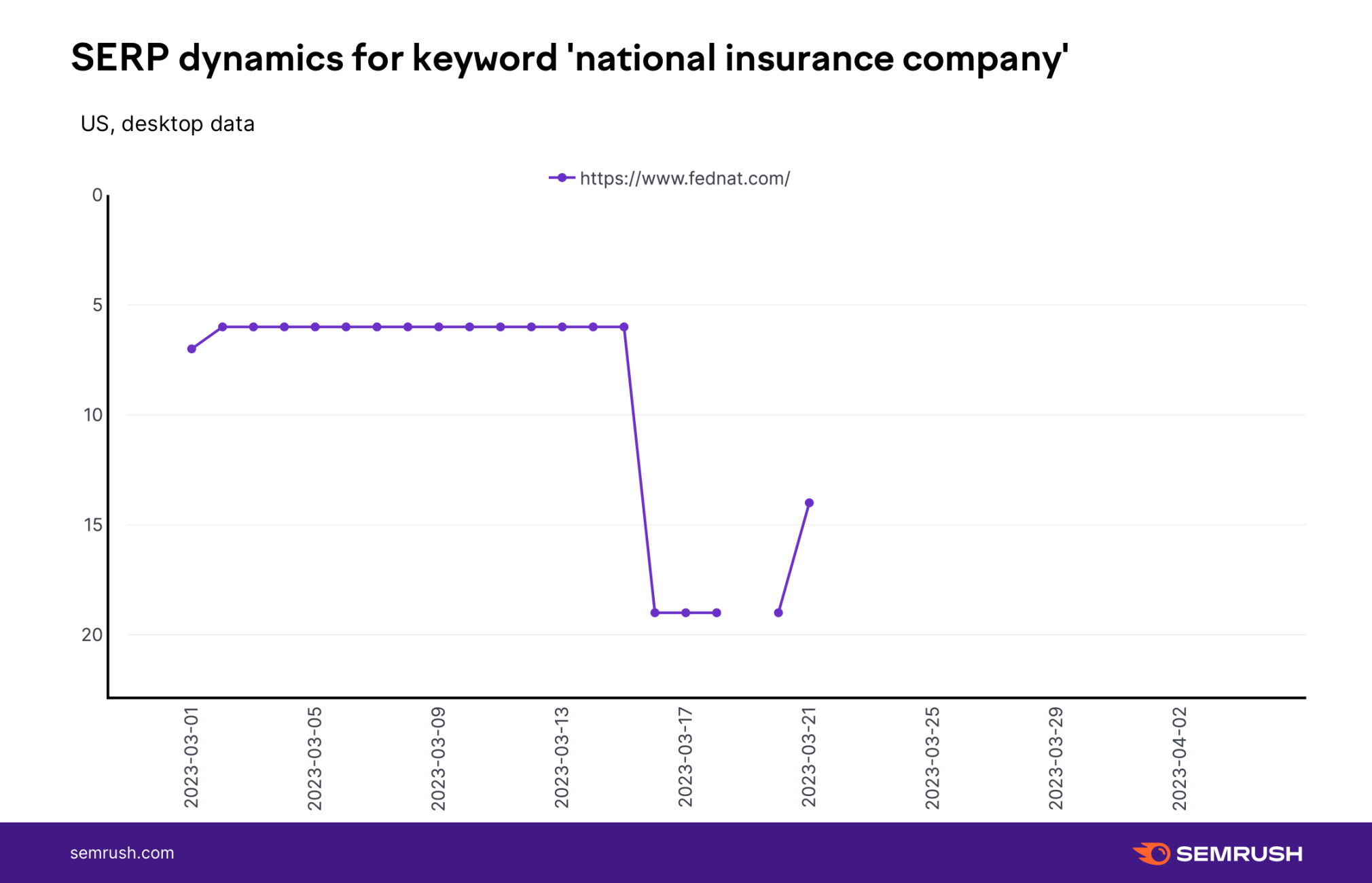
Conversely, the below represents a ranking boost for a prominent and highly credentialed local hand surgeon:
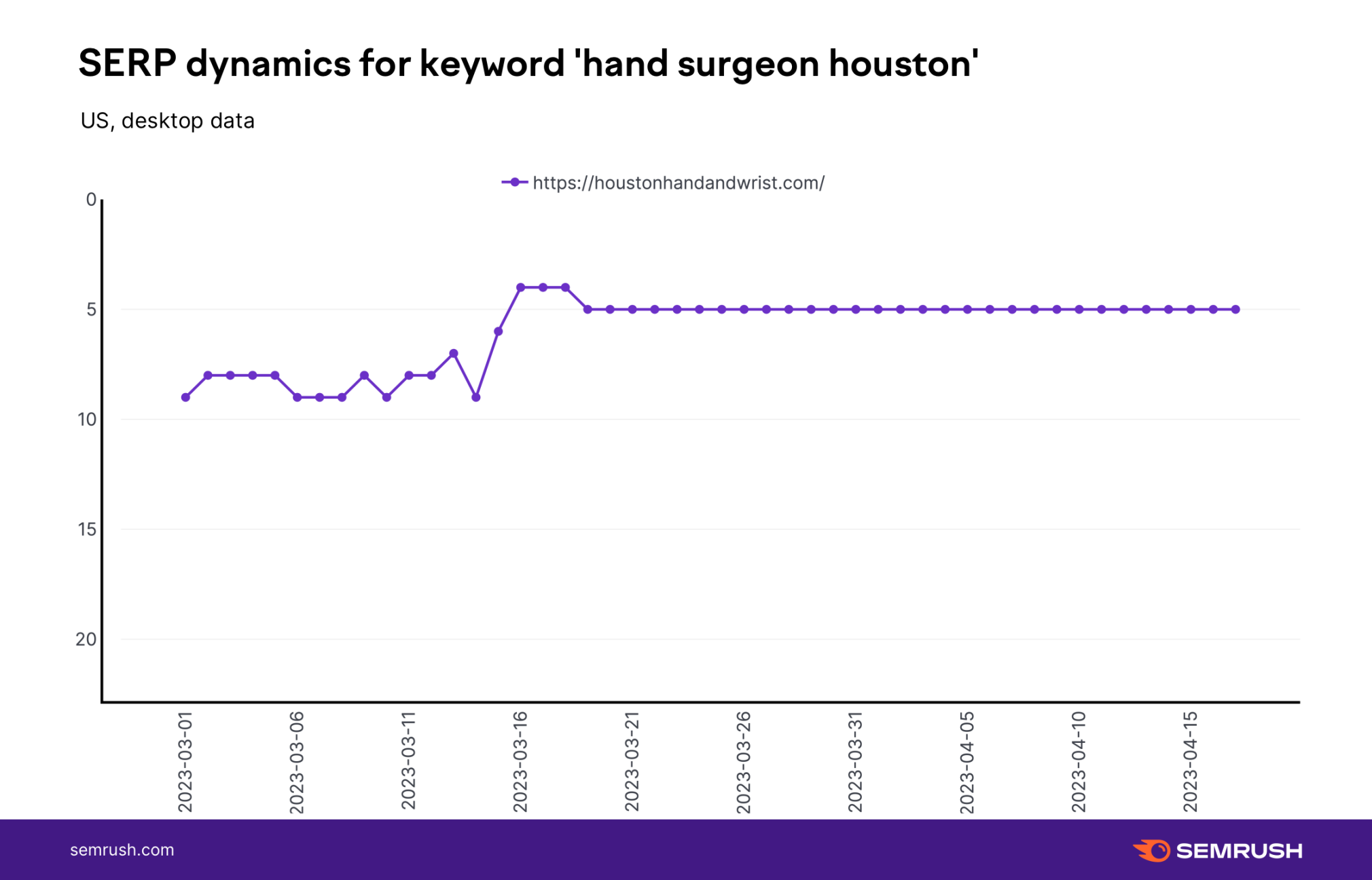
Like many updates, I saw a very large amount of rank reversal patterns with the March 2023 Core Update. It’s hard, if not nearly impossible to say if there were more rank reversals with this particular update. I can say, however, having personally looked at the trends for dozens upon dozens of keywords that the “reversal trend” was very prominent with the March 2023 Core Update.
In the graph below you’ll see a URL that saw steep ranking gains as the update rolled-out. These gains were essentially lost by the time the update was completed.
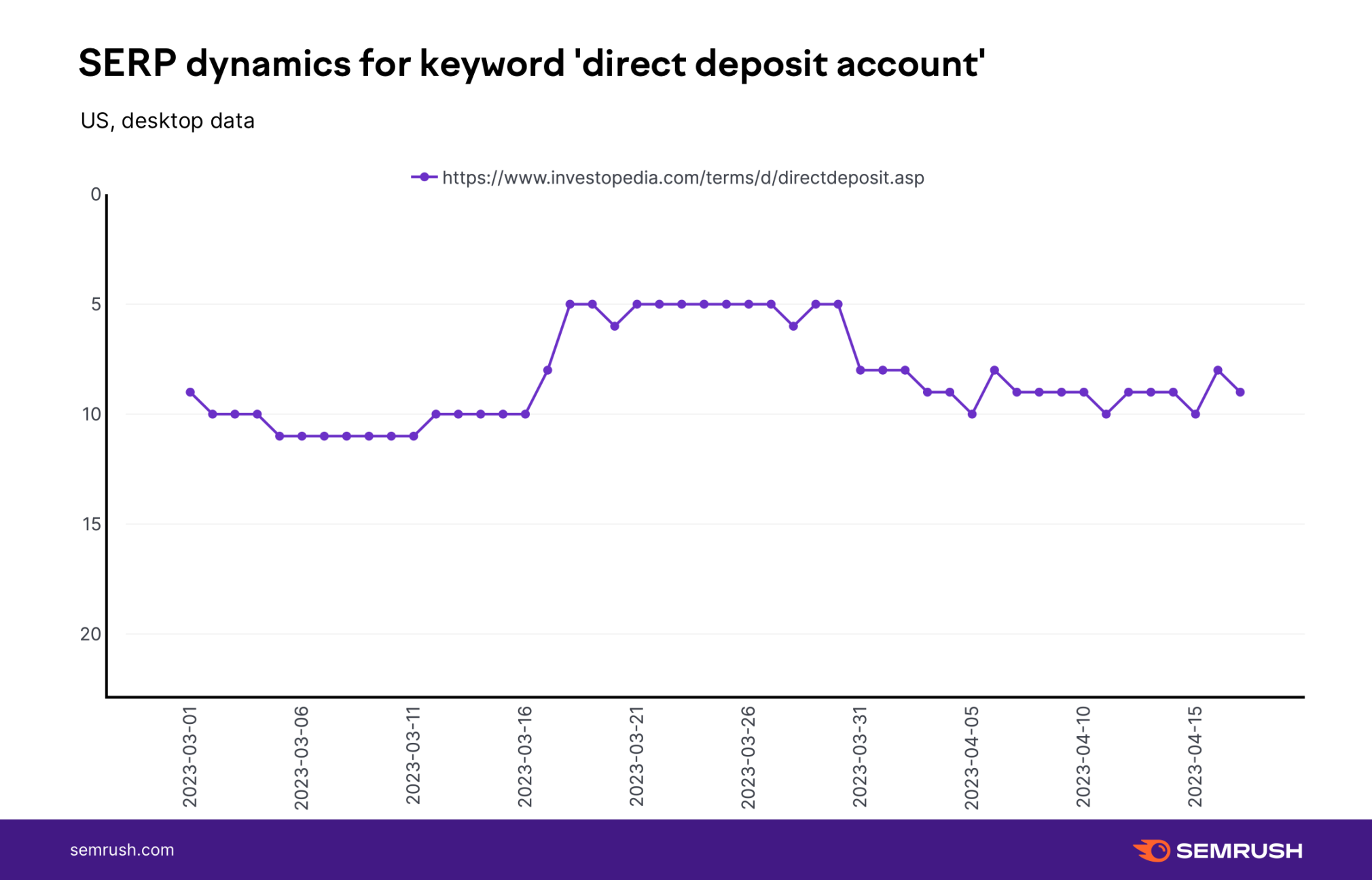
Here’s an inverse pattern where ranking losses at the start of the update were reversed by its end:

For the record, it’s not unusual to see a ranking change at the end of an update be reversed in the subsequent days thereafter.
Here’s a site that you can see Google repeatedly testing prior to the update before settling on a ranking trajectory. That trajectory then shifts with the April 2023 Reviews Update. For the record, the site is not in the review space in the slightest. This makes me wonder if Google is piggybacking reversals to the March 2023 Core Update onto the Reviews Update.

Back Bigger And Stronger
From what the data shows us, the March 2023 Core Update was a return to a somewhat more powerful core update (at least relative to the September 202 Core Update). At the same time, this is the second core update in a row where there does seem to be a tendency towards more “micro-movements” as unlike the May 2022 and November 2021 Core Updates, the March iteration showed average gains/losses similar to the September 2022 update. This despite the fact that the March update was visibly more potent than the September update overall.
As to the effectiveness of the update? I’ll leave that to you to decide.

